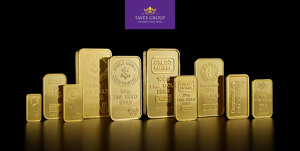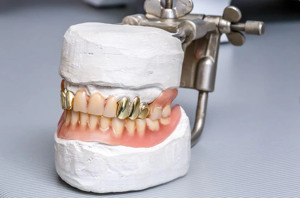Tavex uses cookies to ensure website functionality and improve your user experience. Collecting data from cookies helps us provide the best experience for you, keeps your account secure and allows us to personalise advert content. You can find out more in our cookie policy.
Please select what cookies you allow us to use
Cookies are small files of letters and digits downloaded and saved on your computer or another device (for instance, a mobile phone, a tablet) and saved in your browser while you visit a website. They can be used to track the pages you visit on the website, save the information you enter or remember your preferences such as language settings as long as you’re browsing the website.
| Cookie name | Cookie description | Cookie duration |
|---|---|---|
| tavex_cookie_consent | Stores cookie consent options selected | 60 weeks |
| tavex_customer | Tavex customer ID | 30 days |
| wp-wpml_current_language | Stores selected language | 1 day |
| AWSALB | AWS ALB sticky session cookie | 6 days |
| AWSALBCORS | AWS ALB sticky session cookie | 6 days |
| NO_CACHE | Used to disable page caching | 1 day |
| PHPSESSID | Identifier for PHP session | Session |
| latest_news | Helps to keep notifications relevant by storing the latest news shown | 29 days |
| latest_news_flash | Helps to keep notifications relevant by storing the latest news shown | 29 days |
| tavex_recently_viewed_products | List of recently viewed products | 1 day |
| tavex_compare_amount | Number of items in product comparison view | 1 day |
| Cookie name | Cookie description | Cookie duration |
|---|---|---|
| chart-widget-tab-*-*-* | Remembers last chart options (i.e currency, time period, etc) | 29 days |
| archive_layout | Stores selected product layout on category pages | 1 day |
| Cookie name | Cookie description | Cookie duration |
|---|---|---|
| cartstack.com-* | Used for tracking abandoned shopping carts | 1 year |
| _omappvp | Used by OptinMonster for determining new vs. returning visitors. Expires in 11 years | 11 years |
| _omappvs | Used by OptinMonster for determining when a new visitor becomes a returning visitor | Session |
| om* | Used by OptinMonster to track interactions with campaigns | Persistent |
| Cookie name | Cookie description | Cookie duration |
|---|---|---|
| _ga | Used to distinguish users | 2 years |
| _gid | Used to distinguish users | 24 hours |
| _ga_* | Used to persist session state | 2 years |
| _gac_* | Contains campaign related information | 90 days |
| _gat_gtag_* | Used to throttle request rate | 1 minute |
| _fbc | Facebook advertisement cookie | 2 years |
| _fbp | Facebook cookie for distinguishing unique users | 2 years |
What is gold used for? | Full guide written by a gold expert! | Tavex Bullion

Gold is a valuable and versatile metal that has captivated civilisations for thousands of years. Its unique properties and wide range of uses have made it an invaluable resource in many different industries.In this article, we take a closer look at gold’s many uses, from its role in making beautiful jewellery to its importance in finance, technology, dentistry, aerospace, and more.
Gold in jewellery and decorations

The importance of gold in the world as decoration and fine jewellery spans thousands of years. Today, about 47% of the newly mined gold is used for jewellery production . Thanks to its malleable properties, gold can be transformed into fine wires, thin sheets and various shapes.
To increase durability, pure gold (24 karat) is often alloyed with metals such as copper, silver and platinum. The resulting gold alloys preserve the gold’s natural luster while strengthening it, making them perfect for creating durable and exquisite jewellery.
Gold as a medium of exchange

Throughout history, gold has played an important role as a reliable medium of exchange and a symbol of enduring value. Here are some important reasons why gold has been a preferred currency and form of investment:
- Historical use as currency: Gold coins were among the earliest forms of currency and have been around for over 6,000 years. Civilisations recognised the rarity and beauty of gold, making it an ideal medium for trade and commerce.
- Value: The rarity and uniqueness of gold gives it an inherent value that has transcended cultures and generations. Unlike currencies, gold’s value is not dependent on the stability of any particular government or economy.
- Safe haven: In times of economic uncertainty or geopolitical unrest, investors turn to gold as a safe haven. Gold’s ability to maintain its value during market fluctuations makes it a reliable hedge against inflation and financial instability.
- Diversification of investment portfolios: Many governments, financial institutions and individuals include gold in their investment portfolios. Gold’s low correlation with other asset classes helps diversify risk and preserve wealth.
- Universal acceptance: The universal recognition and acceptance of gold facilitates its use in international trade and finance. It transcends borders and language barriers, making it a practical medium of exchange in a globalised world.
- Durability and portability: Unlike perishable commodities, gold does not break down or corrode, ensuring long-term storage and usability. Gold’s high value in relation to its weight also makes it easy to transport and store.
- Central Bank Reserves: Central banks in various countries hold significant gold reserves as a measure of stability and a form of insurance against currency devaluation.
- Long-term relevance: Despite the evolution of financial systems, gold’s role as a reliable store of value and medium of exchange remains unchanged, giving it an enduring place in the modern financial landscape.
In conclusion, gold’s historical significance, intrinsic value, and universal acceptance have solidified its position as a reliable medium of exchange and an important asset for preserving wealth in an ever-changing economic landscape.
Gold as a long-term investment
Gold has long been considered a wise and reliable investment option that offers a store of value that stands above the volatility of financial markets. Investors from all walks of life turn to gold for a variety of reasons, making it an integral part of diversified investment portfolios. Here are some key aspects that make gold an attractive investment:
1. A safe haven in difficult times: In times of economic uncertainty, political instability or market downturns, gold often appears as a safe haven. Its intrinsic value and limited availability provide a sense of security, making it an obvious choice for investors looking to preserve their wealth and hedge against inflation.
2. Benefits of Diversification: Gold’s low correlation with other assets, such as stocks and bonds, makes it an effective diversification tool. Including gold in an investment portfolio can help reduce overall risk and improve the portfolio’s resilience to market fluctuations.
3. Global acceptance and liquidity: Gold is widely accepted and traded globally, making it a highly liquid asset. Investors can easily buy or sell gold in various forms, e.g. bullion, coins or exchange-traded funds (ETFs), giving them quick access to funds when needed.
4. Inflation Hedge: Gold has historically demonstrated its ability to maintain purchasing power over time, and acts as an effective hedge against inflation. As the value of paper currencies erodes due to rising prices, the value of gold remains relatively stable, preserving the true value of the investment.
5. Historical Performance: Over the long term, gold has delivered solid returns to investors. Although there may be short-term fluctuations, its overall performance has demonstrated its ability to preserve and even grow wealth.
6. Reserves of central banks: Many central banks around the world have significant amounts of gold in their reserves. The fact that governments themselves value gold as an important asset underlines its importance as a reliable store of value.
7. Ease of access: Gold investments are available to both individual and institutional investors. With a variety of options available, such as physical gold, gold ETFs and gold mining stocks, investors can choose the most appropriate approach to meet their investment goals.
8. Tangible asset: Unlike some financial instruments, gold is a tangible asset that investors can physically own. The physical nature provides a sense of ownership and control over the investment, which appeals to many.
For those looking for stability, diversification and long-term value preservation, gold stands as a shining beacon of investment opportunities.
Click here to see Tavex’s range of investment gold.
Gold in the electronics industry

Gold’s properties have cemented its role in the electronics industry, where it fulfils a variety of critical functions. Let’s explore how gold contributes to the efficiency and reliability of various electronic devices:
- High electrical conductivity: Gold is an excellent conductor of electricity, allowing it to efficiently transmit electrical signals within electronic components. This feature ensures seamless and reliable communication between different parts of electronic devices.
- Resistance to Corrosion: Unlike many other metals, gold is highly resistant to corrosion. Therefore, gold-plated contacts and contact points in electronic devices remain untouched over time, preventing signal degradation and ensuring long-lasting performance.
- Applications in microelectronics: In microelectronics, where miniaturisation is critical, gold’s ability to be precisely shaped into thin wires and contact pads is invaluable. The malleability of gold allows it to be used in complicated circuits and components, making it possible to create sophisticated devices.
- Stability and reliability: The inert nature of gold makes it very stable, even under harsh environmental conditions. This stability ensures the longevity and durability of electronic components, reducing the risk of malfunctions and increasing the reliability of the devices.
- Aerospace Applications: The aerospace industry relies heavily on gold due to its exceptional performance in extreme environments. Gold-plated components in satellites and spacecraft provide reliable electrical connections and protection against radiation.
- Medical Electronics: In medical devices, where precision and reliability are of utmost importance, gold-plated connectors ensure accurate data transfer and robust performance. Medical devices and implants benefit from gold’s biocompatibility and non-reactive properties.
- Continued relevance: As technology evolves, gold’s properties continue to be crucial for new technology, e.g. wearable devices, Internet of Things (IoT) applications and advanced computing systems.
In summary, gold’s remarkable electrical conductivity, corrosion resistance, and stability make it an essential material in the electronics industry. From smartphones to space missions, gold’s contributions enable the seamless functioning of modern electronic devices and drive technological progress.
Gold in dentistry
Gold’s practical uses extend to dentistry , where it has been used for centuries in various dental procedures. The use of gold in dentistry goes as far back as 700 BC. when Etruscan “dentists” used gold wire to attach replacement teeth to their patients’ mouths.
One of the main reasons for gold’s popularity in dentistry is its performance and appearance. Gold alloys are preferred for dental fillings, crowns, bridges and braces due to their non-allergenic properties and ease of handling during dental procedures.
Unlike other metals, gold is highly biocompatible and minimises the risk of side effects, making it an excellent choice for dental restorations. In addition, its malleability allows for precise shaping, ensuring a comfortable and natural fit for patients.
As it continues to evolve, gold’s unique properties remain highly relevant in the field, confirming its position as a valuable material in dentistry.
The cultural and symbolic significance of gold

Gold has deep cultural significance and has fascinated mankind throughout the ages. It symbolises:
- Wealth and Prestige: The rarity and appearance of gold make it a symbol of wealth and high social status.
- Spirituality: Many cultures associate gold with the divine and use it for religious artefacts.
- Achievement: Gold medals are the highest award for outstanding achievement.
- Artistic expressions: In literature and art, gold is used to symbolise prosperity.
- Treasures and Adventures: Gold is often depicted as a coveted treasure in myths and stories.
Through history, gold’s cultural significance has remained a timeless symbol and part of our culture and heritage.
Summary
Beyond its concrete uses, gold has been woven into human culture and represents prestige, wealth and spiritual reverence in various civilisations. Its symbolism in religious artefacts, weddings and prestigious awards attest to its enduring relevance in society.
As we reflect on the wonders of gold, we acknowledge its remarkable journey from the depths of the earth to the pinnacle of human desire. With its eternal allure and universal appeal, gold continues to shine brightly, forever etched in human history and cherished in the hearts of people the world over.



















